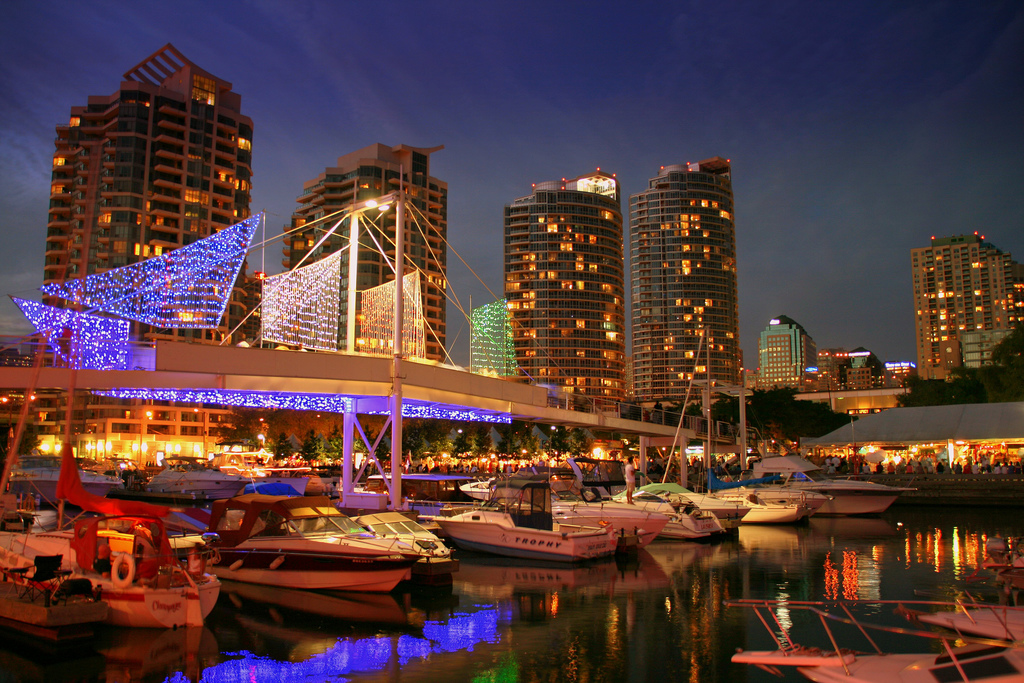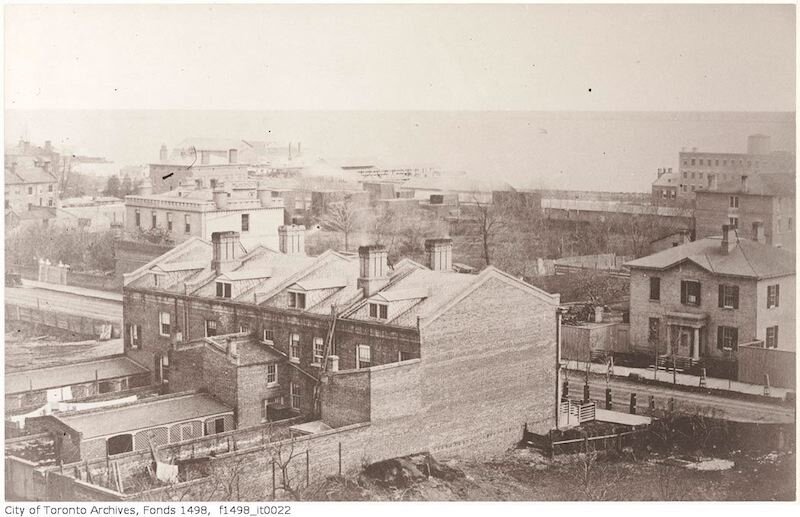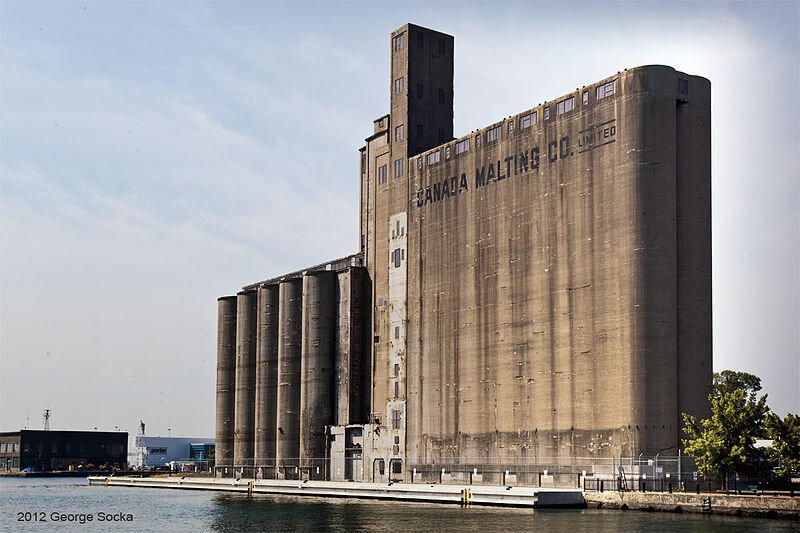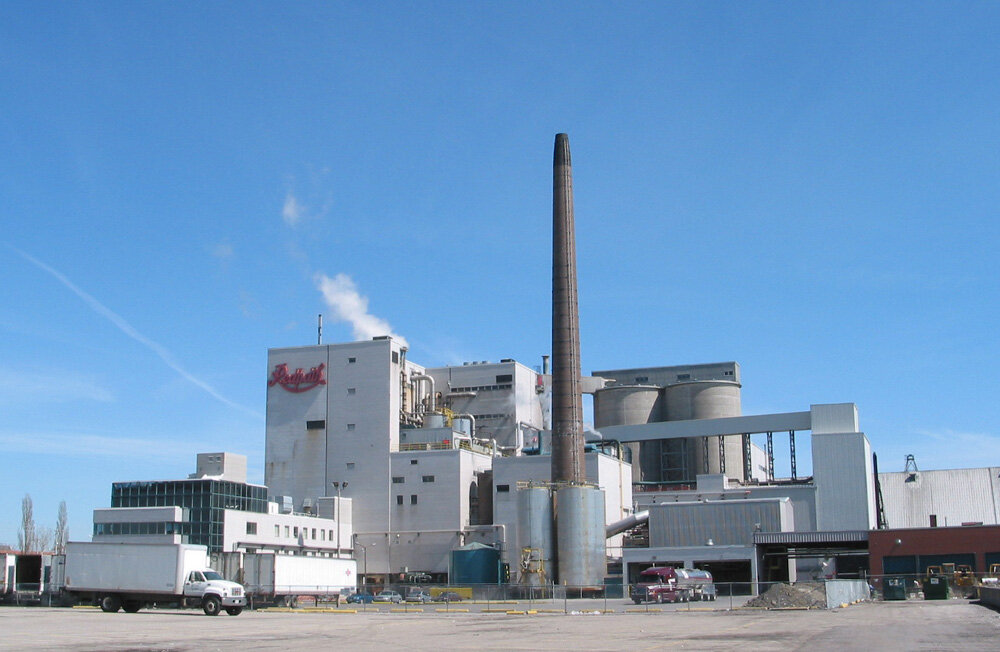
The Toronto Harbourfront is a go-to spot for tourist as well as locals. As an alternative to sneaking into the pool at the Radisson Hotel, HTO Park's stylish yellow umbrellas now act as something of a draw. There's also the summer festivals at Harbourfront, ongoing exhibitions at the Power Plant and the all important ferry terminal providing access to the Toronto Islands, home to car free living, bike paths, a nude beach and some of the city's best summer music festivals.
The History of Harbourfront
Toronto's harbour has been used since the founding of Toronto for shipping and industrial purposes. The Town of York was founded to the west of the Don River, along the waterfront. When the town was founded, the water's edge was approximately where today's 'Front Street' is located. Over time, the area south of Front Street to today's water's edge south of 'Queen's Quay' was filled in with landfill, creating piers and area for industrial development.
Prior to the 1972 federal election, Canadian Prime Minister Pierre Elliot Trudeau announced the Harbourfront project, which would expropriate the industrial port lands from York Street west to Bathurst Street, south of Queen's Quay and convert them to a cultural and residential district for Toronto, similar to the Granville Island district in Vancouver. The federal government has converted the industrial area to an area mixed with art galleries, performance spaces, boating areas and parks. The surrounding neighbourhood, formerly industrial has been converted by private land developers into a series of condominium towers overlooking the project and Lake Ontario.
From its beginnings as "Harbourfront Corporation", a federal Crown Corporation established in 1972, Harbourfront Centre was formed on January 1, 1991 as a non-profit charitable organization with a mandate to organize and present public events and to operate a 10-acre site encompassing York Quay and John Quay (south of Queens Quay West). Since its inception, Harbourfront Centre has been used by artists that would not normally be seen in commercial venues, in an effort to foster new forms of arts and expression.
In July 2012 Waterfront Toronto began a major reconstruction of Queen's Quay West, requiring the 509 streetcar to be replaced with buses for the duration of the construction. On October 12, 2014, streetcar service resumed on 509 Harbourfront route after an absence of over two years in order to rebuild the street to a new design. With the new street design, two auto lanes south of the streetcar tracks were eliminated between Spadina Avenue and York Street in order to extend Harbourfront parkland to the edge of the streetcar tracks. The Martin Goodman Trail (a bicycle path), two rows of trees, benches and a wider pedestrian space are located on the immediate south side of the streetcar tracks.
Harbourfront Today
The area along the waterfront is composed of mixed uses. The federal government lands to the south of Queen's Quay include a community centre, a Toronto fire department station, various boating uses, parkland and the Harbourfront Centre. To the north of Queen's Quay, all of the industrial lands along the street have been replaced with high-rise condominium towers. To the east of the federal government lands, the waterfront is mixed with industrial uses, a hotel, ferry docks, boating uses, a sugar factory and vacant lands.
Notable buildings and facilities
Harbourfront is the site of the Jack Layton Ferry Terminal which provides transportation services to the Toronto Islands from the foot of Bay Street.
Harbourfront Centre, housing galleries and performance spaces is located at the foot of Lower Simcoe Street. Harbourfront houses four craft studios; ceramics, glass, metal and textiles. All studios began in 1974 and still operate, providing new craft artists with subsidized work spaces at the beginning of their careers. Harbourfront hosts an extensive program of arts and cultural events throughout each summer, including craft and artisan fairs, theatre and dance performances and musical concerts. A series of free concerts is staged at Harbourfront's outdoor concert stage every weekend throughout the summer and in winter there is a free open-air ice rink.
Queen's Quay Terminal, next to Harbourfront Centre, is a former warehouse converted into a mixed-use building including a shopping centre designed for high-end retailers, commercial office space, and a residential condominium development. Today, the mall houses some stores and restaurants, predominantly catering to tourists.
The Canada Malting Silos along the waterfront at the western edge of Harbourfront, are one of the last vestiges of the industrial past of the neighbourhood. The buildings were long ago abandoned by the company that built them, but a proposal for demolition was cancelled when the estimated cost for demolition rose into the millions of dollars. The site is also now considered a heritage site, and any development must conserve some aspect of the industrial past. Two proposals have been made, a Canadian music museum and a Toronto history museum have both been proposed for the site. Both proposals keep the silos, but demolish other buildings on the site. The silos are one two remaining silos in the area (see Victory Soya Mills Silos) and reminder of the past uses of the area.
To the south of the Silos, Toronto Ireland Park was inaugurated in 2004. The site has memorials to an 1878 exodus of Irish persons to Toronto.
To the east of Harbourfront, at the foot of Jarvis Street is the Redpath Sugar Refinery, which is both an active sugar refinery and a sugar production museum.
Parks and open spaces
Although Toronto has often been criticized for not having a dynamic and beautiful waterfront park, Harbourfront has a network of parks, open spaces and trails that allow residents and visitors to access the public realm. Parks and public spaces like HTO Park, the Martin Goodman Trail, the Yo-Yo Ma Music Garden, and the Waterfront WaveDecks at the foots of Spadina Avenue, Rees Street and Lower Simcoe combine to beautify the Harbourfront and bring people to the water's edge.
Living in Harbourfront
Homes in Harbourfront are made up entirely of condominiums. There's no shortage of luxurious condos here (including many for rent), and they combine impressive views and high-end details.
Many of the area's condo buildings have been built in the last few decades, and a flurry of brand new options have recently been finished. A large number of them have balconies that look out over the water and marinas.
Harbourfront is a favourite among young professionals who work downtown. You'll also find a variety of residents from various walks of life who appreciate the balance this area offers between a relaxed lifestyle and proximity to the city's larger core.
There are plenty of Torontonians who want to enjoy the condo living lifestyle in this exciting neighbourhood—and many of them are renters. That isn't likely to change anytime soon.
Looking for the best of Harbourfront?
Parks
Schools
Please click here for a comprehensive list of schools in Harbourfront.
Restaurants
Miku: Flame-seared sushi is the specialty at this Japanese fine-dining destination with soaring ceilings.
The Butcher Chef: Decorated in dark wood, this upscale steakhouse offers Wagyu beef plus a long scotch and wine list.
Harbour 60: Destination dining with classic fare and an extensive wine list in wood-accented, old-world environs.
Cafés
Pie Bar: Lively spot with a lakeside patio serving Neapolitan-style pies and fresh pasta, plus gelato and drinks.
We Brew Café: Italian coffeehouse chain pouring coffee drinks, smoothies and light eats in a contemporary space.
Lavazza: Italian coffeehouse chain serving up coffee drinks, smoothies and light eats in a modern space.
Gyms/Fitness
Galleries
Sur Gallery












